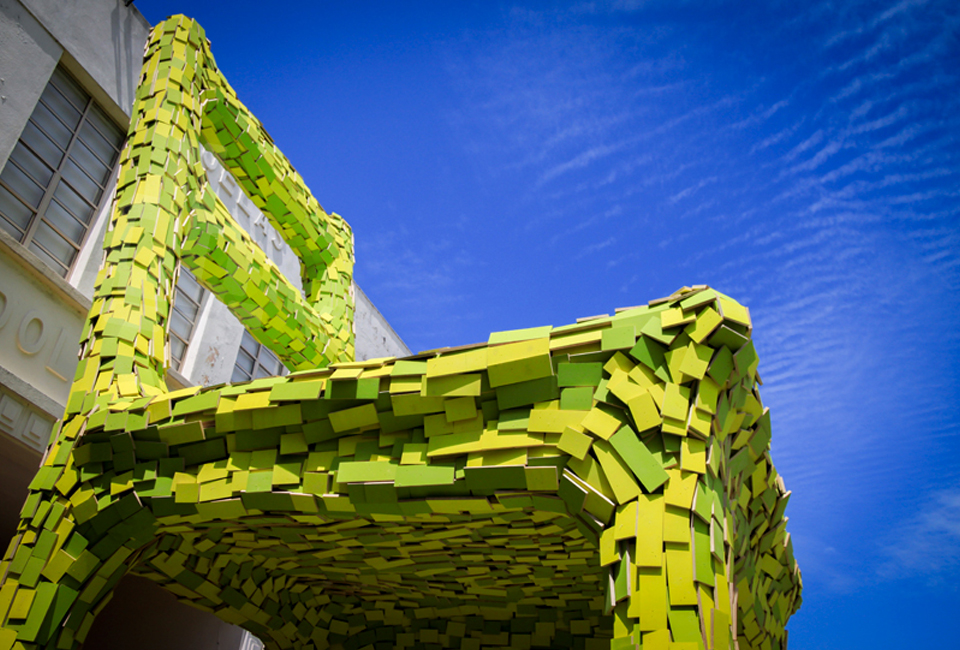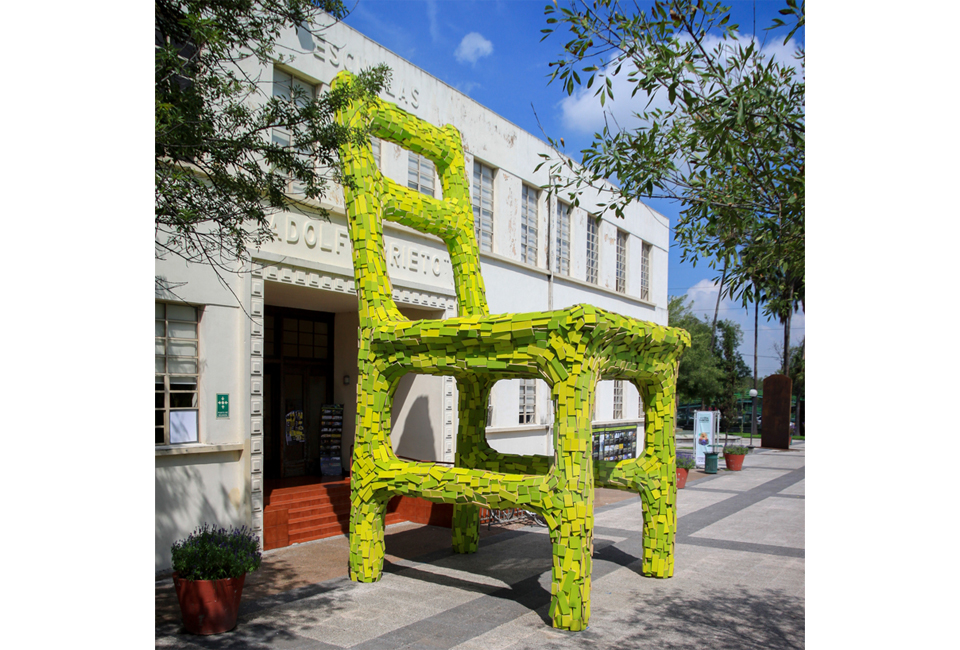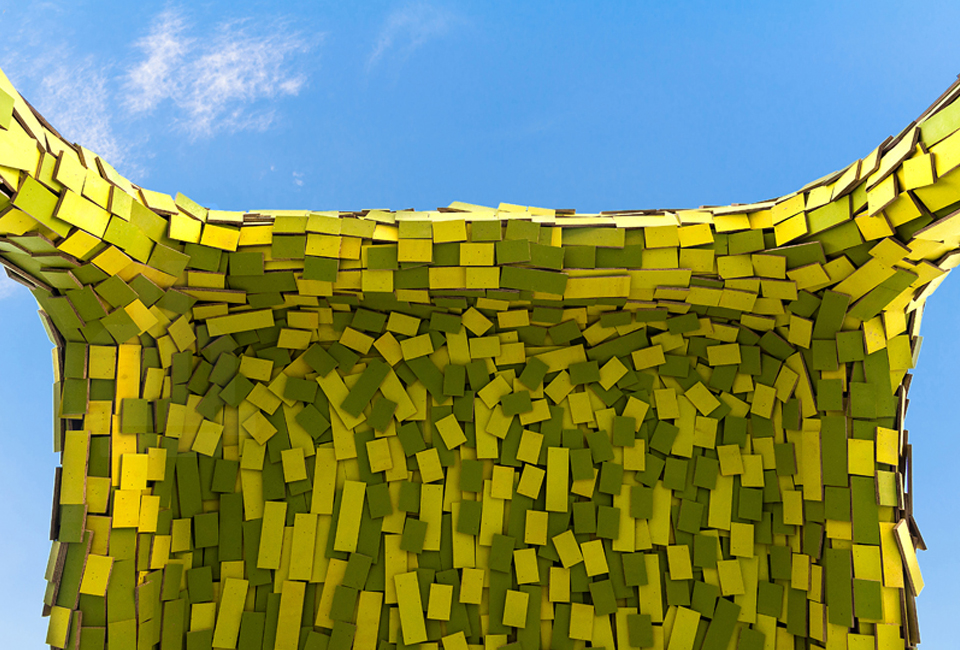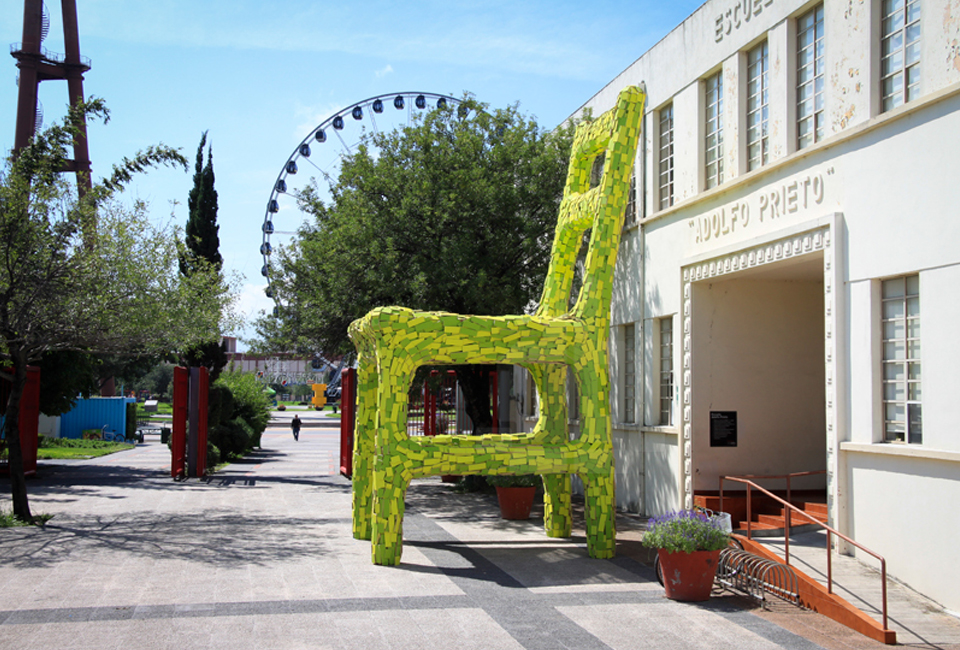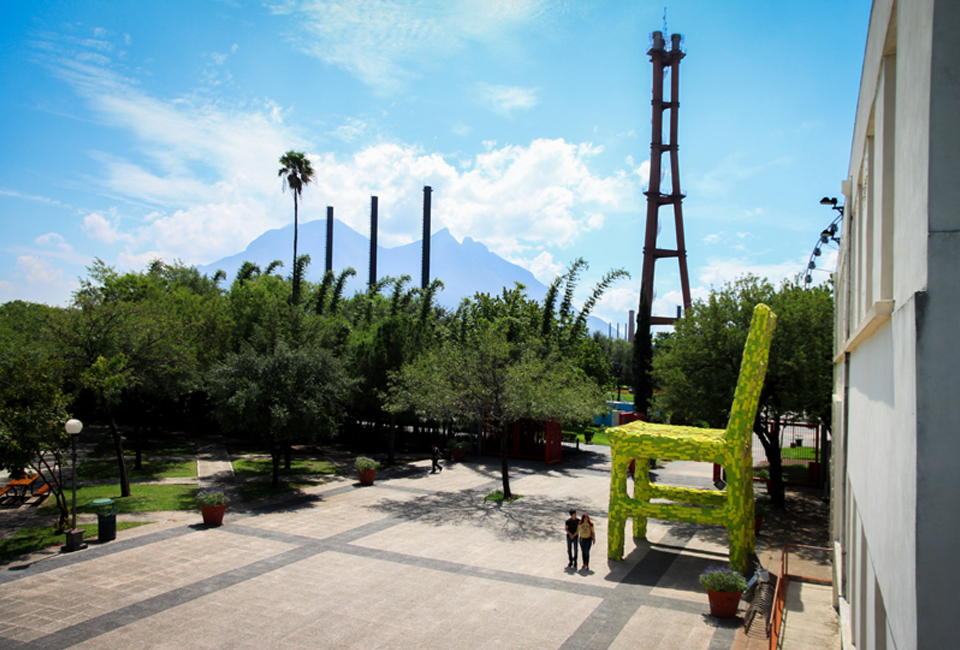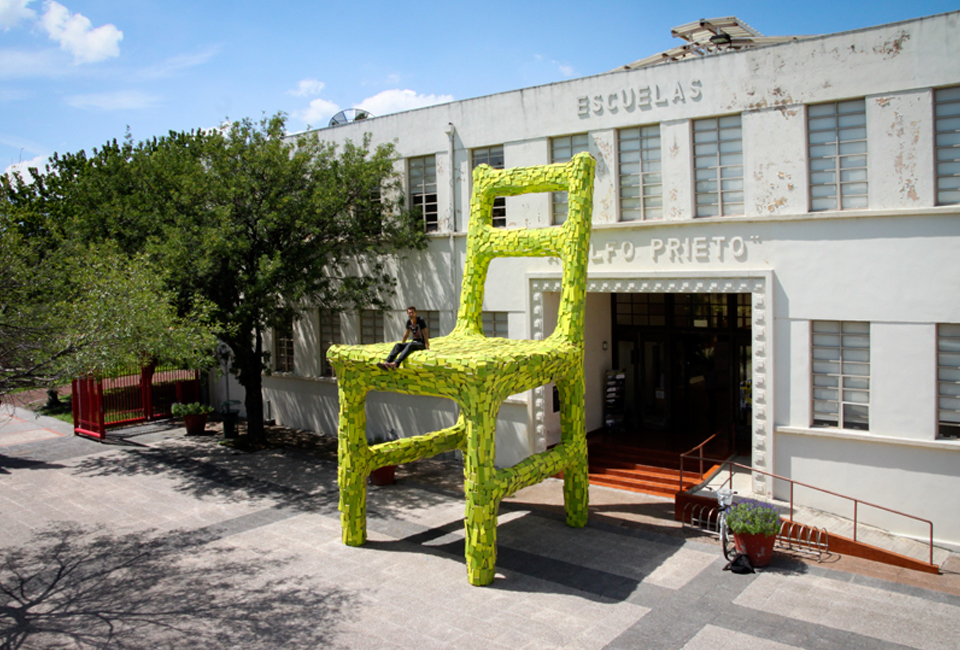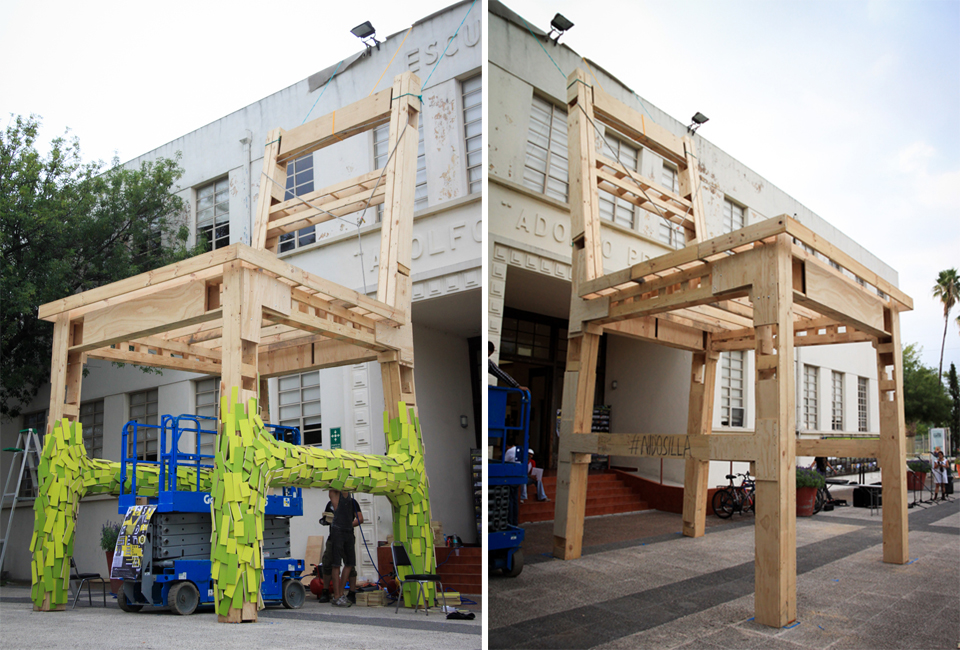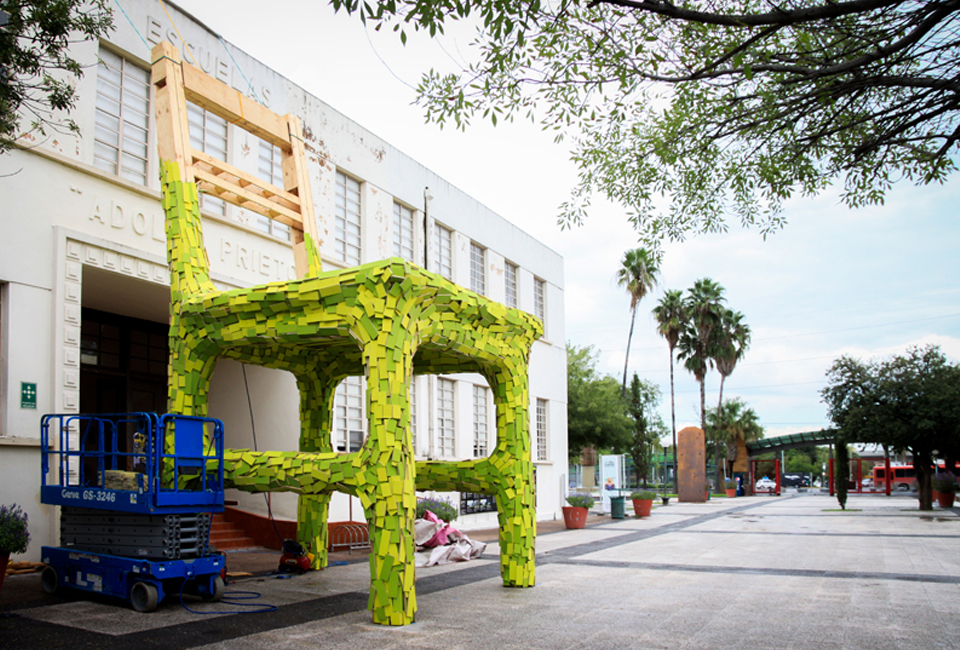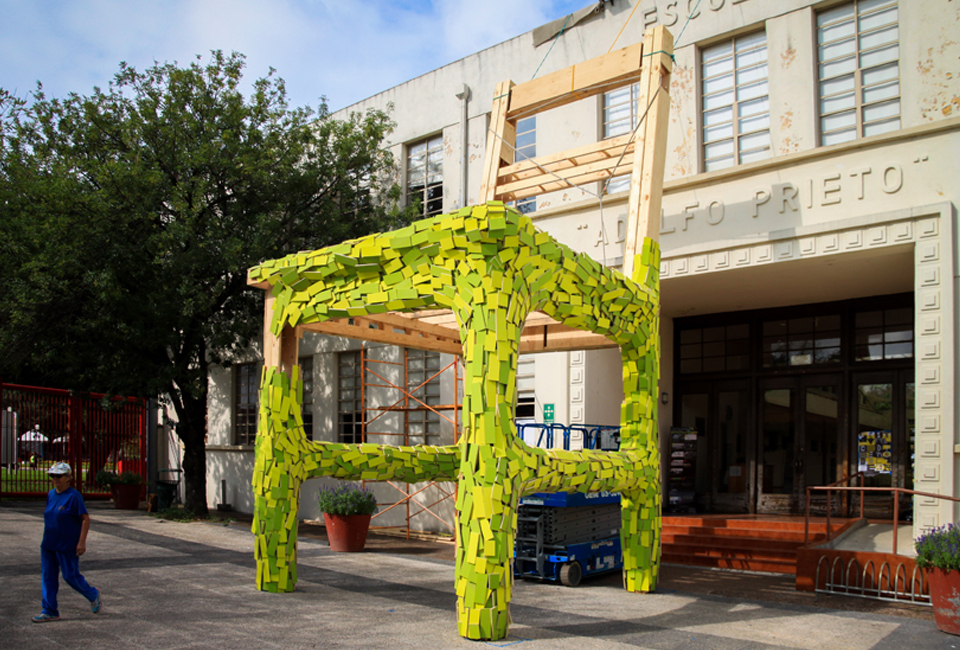Fundidora Park in Monterrey, Mexico is a 350 acre sustainable urban public green space, which back in the late 80s, was owned and operated by Monterrey steel as a fully functioning steel foundary. Thought it is no longer in operation, the site has preserved many of the original buildings and objects that were produced there, making it a famous archeological industrial site in Mexico.
Mark Reigelman II was commissioned to develop a site specific work as part of the DECODE design festival program in Monterrey, at the entrance of the Adolfo Prieto Escuela within Fundidora Park — a school which was once attended by the children of foundry workers, and which is now run by CONARTE and functions as a creative hub for the community.
Intrigued by the positioning of large steel artifacts found juxtaposed against the lakes, trees and rivers of the public park, Reigelman wanted to create a monumental sculpture that captured this contrast of industry and natural beauty. His concluding vision is ‘nidosilla’, a mammoth-sized ‘nest chair’ which stands to represent two identities — one for DECODE, which celebrates and promotes contemporary industrial design and creative discipline, as expressed through the form of a chair; and another for the school, symbolizing community, knowledge and growth, implied through the impression of a nest as its visual emblem.
Standing at approximately 30 feet tall, 14 feet wide and 14 feet deep, the structure of the mammoth-sized seating object was built from a wooden substructure using 2″ x 6″ boards reinforced with 3/4″ plywood and stainless steel hardware at the joints. Its supporting rear legs and backrest were hoisted by hand and held into position, followed by the front legs. These vertical components were then connected by horizontal members, with the seat being attached last. To create the rich, bold ‘nest’ that camouflages its framework, 125 sheets of 3/4″ plywood were painted in two shades of green, which were cut into 4″ x 12″ strips. over 12,000 of these were held in place by approximately 48,000 nails to complete the site-specific installation by a team of 20 volunteers, over 10 days. The massive installation was fabricated all on location, using local suppliers and manufacturers.
